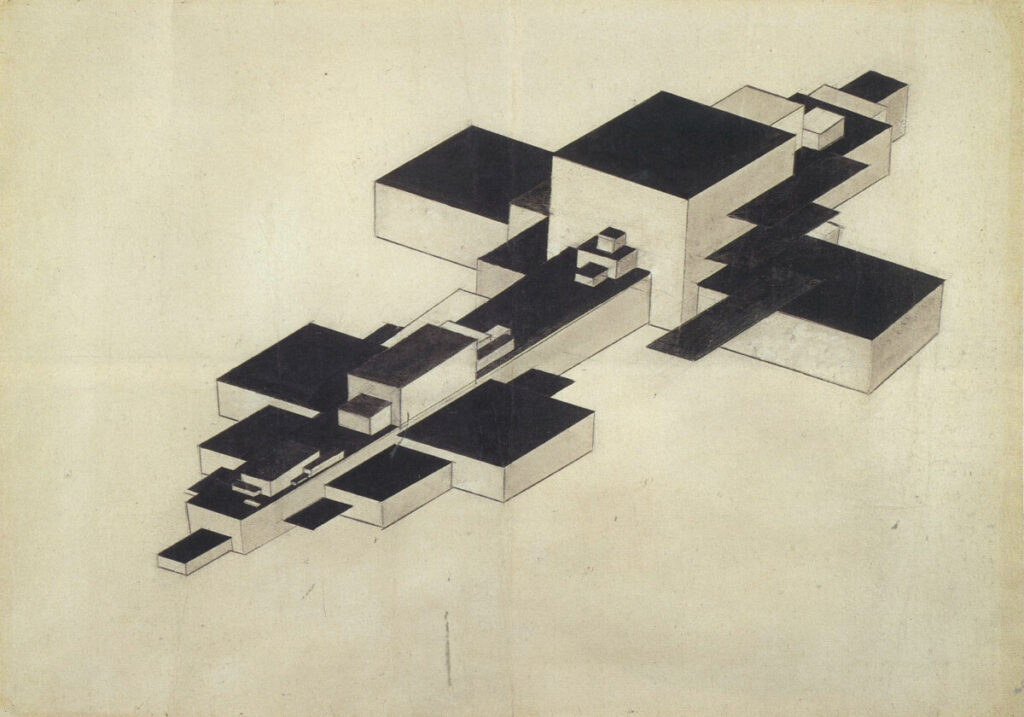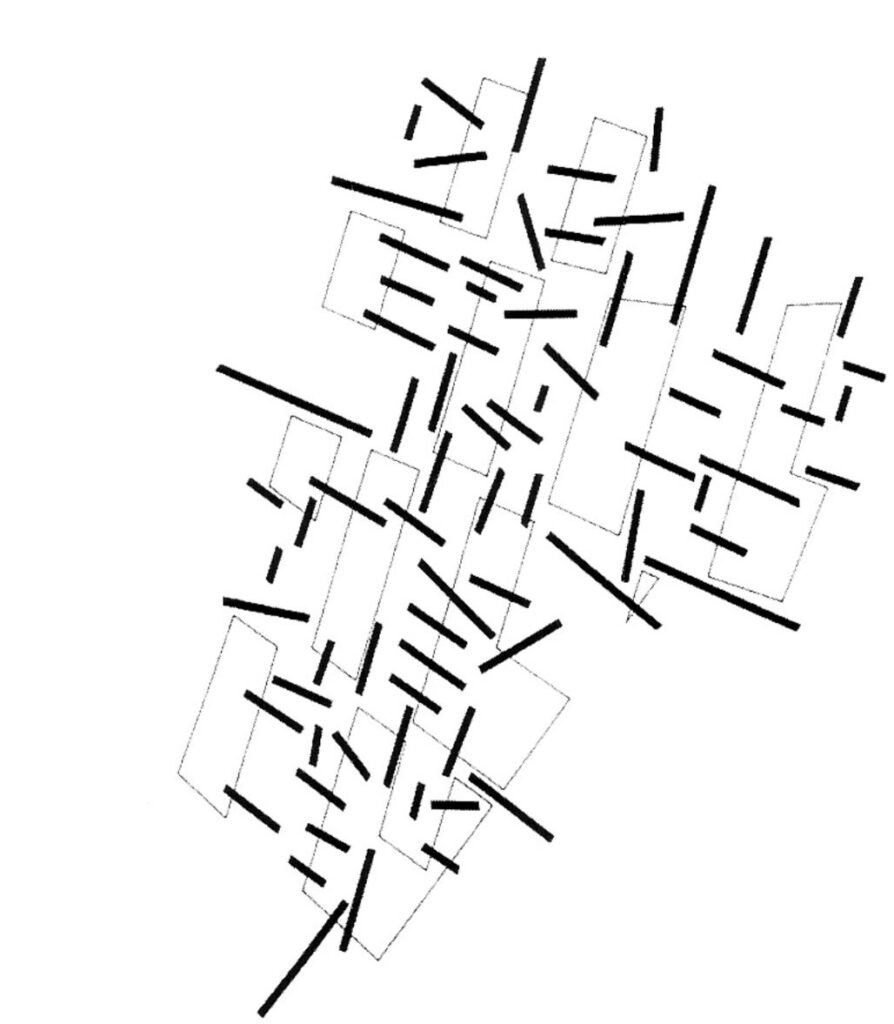Prof. Eirini Tsachrelia, etsachrelia@citytech.cuny.edu
Prof. Ioannis Oikonomou, ioikonomou@citytech.cuny.edu
PROJECT 1: RECTILINEAR FORMS


ABSTRACT
In this project, the goal is to develop a preliminary understanding of fundamental design principles through the iterative process of creating 3D composition. Also essential is the ability to effectively communicate one’s design ideas through specific verbal description and 2D graphical representation and documentation.
“An orthographic projection is a type of abstract drawing that represents a three-dimensional object in two dimensions. In an orthographic projection, lines representing the inside and outside edges of an object’s “faces,” or facades, are projected at right angles between various two-dimensional views: (top, front, rear, side).”
Rendow Yee, Architectural Drawing: A Visual Compendium of Types and Methods
PROJECT 2: CUBES AND GRIDS
ABSTRACT
Students will continue to develop strategies for translating 2D lines into 3D form. Preliminary 2D diagrams of grid, proportion and rhythm will evolve into 3D space creation. This exercise sharpens the ability to observe, interpret, and analyze visual information within an abstract two-dimensional field. THIS IS NOT A LINEAR PROCESS! It requires constant adaptation and refinement between 2-D drawings and 3-D explorations to develop an intelligent and spatially provocative solution.
“Any city is comprised of many systems—economic, technological, social, cultural—which overlay and interact with one another in complex ways. Each system is different, but from one point of view all share a common purpose–the organization of energy—and a common goal—giving the cumulative energy of the city a coherent form.“
Lebbeus Woods
PROJECT 3: PAPER LANDSCAPES
The goal of this exercise is three-fold:
- To introduce the process of analytical observation and documentation through diagramming, mapping and constructing graphic representations.
- To translate analytical studies into strategies for design.
- To understand the fundamental design ordering principles through the iterative process of creating 3D composition from 2D diagrams.
This process will be developed using a non-rectilinear system of organization created by the student. The student will further develop the ability to effectively communicate one’s design ideas through specific verbal description, 2D graphical representation and documentation and 3D model.

Geometry is the invisible scaffold that at once controls the distribution of parts, but disappears in the final building.
Stan Allen, From Object to Field: Field Conditions in Architecture and Urbanism



